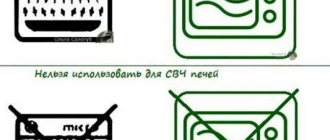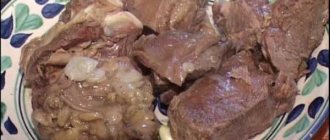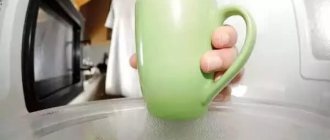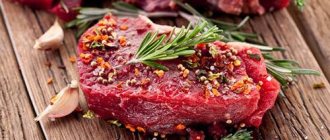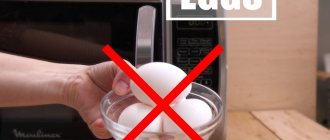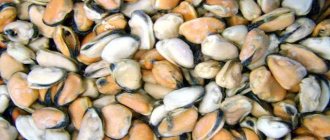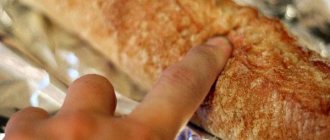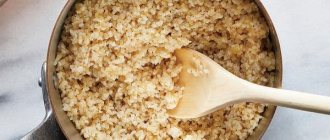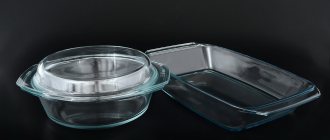Many people cannot imagine their life without a microwave oven. You won’t surprise anyone with this kitchen appliance – it’s in almost every home. But despite this prevalence, the question of using foil in a microwave oven is raised from time to time. Many people, when purchasing ready-made food in supermarkets, doubt whether it can be heated in the foil containers sold, and wonder how safe such packaging is for the appliance and for humans.
Whether it is possible to heat food in foil in a microwave and what material will not harm the equipment, you will learn from our article.
What not to heat food in a microwave oven
While the microwave is not dangerous for humans, it is the worst enemy for some kitchen utensils. Without worrying about the “compatibility” of new equipment and your favorite saucepans, you can ruin food, set fire to the stove, or cause an explosion. There are some materials that should never be placed in the chamber, and there are exceptions for others. How to distinguish them?
Plastic
When a plastic container is labeled with an approval sticker, it is best to ignore (or check) the manufacturer's permission. According to the law, he is not required to test his products during production.
When heated, plastic releases special toxic substances that easily penetrate food. Warming up your lunch for a long time in a low-quality plastic lunch box will cause it to come out of the oven melted. Heating using cling film has a similar effect: carcinogens from polymer materials get inside the food.
Gold plated plates
The “saucer with the golden edge” can sparkle if you put it in the microwave. The immediate danger is fire. Spare the electrical appliance, yourself and your home. Beautiful plates and dishes with gold patterns are not designed to be exposed to waves.
Why you can’t put gold plating in the microwave
The electrical appliance is made of metal, and there is a mesh on the door - have you noticed? There are no exceptions in any model! The design features prevent microwaves from leaving the housing; the metal serves as protection. A spark, an electric arc, or a fire will appear inside a microwave oven that contains an iron bowl by mistake or for fun.
But there are also specialized dishes created for the needs of microwave oven users. This includes the Aqua Cook Samsung set - the steaming set has a metal cap that protects food from exposure to microwaves.
Combination ovens
If you get an appliance equipped with a grill or heater, there are loopholes. Often a heating element or grill can be used independently, without radiation. Then cook in pots, pans, iron trays, salad bowls - the list goes on, but do not forget to turn off the microwave mode.
Porcelain
Porcelain utensils produced in the post-Soviet space contain lead. Heavy metals were mixed into raw materials for durability, excellent performance and elegance of products. Porcelain cups, glasses, bowls, salad bowls, tureens containing lead are very dangerous for microwaves.
Hardware
“Can I put iron cookware in the microwave?” - you ask. "No!" - experts and manufacturers will answer.
The metal reflects waves that can lead to an explosion - at best, you will throw out the stove, at worst, you can easily get injured. Do not assemble such a “bomb” with your own hands. Iron, aluminum, enameled and other metal utensils cannot be placed in the chamber, because they begin to spark. As with gold plating, this poses a risk of fire.
Crystal
If the crystal is not fake, it contains lead, and expensive crystal contains silver. In faceted products, the wall thickness is not the same, so the heating process will not be uniform. Metal impurities lead to a rapid increase in temperature - your favorite salad bowl or vase bursts. If crystal objects are dear to you, do without experimenting.
How does the tree react?
We don't often use wooden utensils: at most it's a cutting board, a hot tray, or a container for storing cereals. Few people cook in wooden bowls, but there will always be enthusiasts.
Manufacturers (not all) warn against using wooden utensils, otherwise they may overheat and become charred. But you can try using it in short cycles - when heating or preparing quick dishes. The type of food also matters: avoid fatty and sugary foods.
Remember that wood may contain moisture, it is a living material, and the waves of the device do not affect objects, but water molecules. So products made from “fresh” wood are deformed by moisture.
Paper items
There is no prohibition on using disposable paper or cardboard utensils in a microwave oven. But it is not suitable for long-term cooking (especially fatty foods). Packaging containers coated with plastic or wax will definitely “leak”—products that receive the melted coating will deteriorate.
You can use ordinary paper towels for the kitchen, and cover the baking sheets with tracing paper, as when baking in the oven. When baking cupcakes, you can use corrugated paper molds. Avoid recycled paper, which may contain toxins and metals.
Necessary recommendations
The list of prohibited products and materials for use in the microwave is extensive.
- Dry sponges. Microwaves can help remove harmful organisms from the surface of the sponge. However, to carry out disinfection, the sponge must be moistened with water. A dry surface may cause a fire;
- Vintage dishes. Such containers often contain gold plating. Heating the surface of products can cause sparking, which will lead to fire;
- China. Heavy metals such as lead are often used in the manufacture of these products. They are not suitable for microwave use;
- Plastic dishes. Prolonged heating causes the breakdown of components that end up in food. Also, heating can cause melting, which will lead to malfunction of the household appliance;
- Raw eggs, sausages in natural casings, tomatoes, mussels, oysters. The products contain a lot of liquid. High temperature causes the liquid to increase in volume. This may cause an explosion, which will lead to failure of the microwave;
- Blue cheese is not suitable for melting in principle. Under the influence of high temperatures, it loses its taste and also becomes a source of a sharp moldy odor. There is such a product recommended in finished form.
conclusions
There are special dishes that can be used in the microwave. You can heat or cook delicious and healthy food in it. But with some items you need to be extremely careful.
Now it has become clear what will happen if you heat the foil in the microwave. Based on the information received, we can conclude that it is possible to heat food in this way. But this should be done extremely carefully and using special foil. Well, it’s better to use special heat-resistant dishes for such purposes and not take risks.
Let's find out whether it is possible to heat food in the microwave in foil?
Many people cannot imagine their life without a microwave oven. You won’t surprise anyone with this kitchen appliance – it’s in almost every home. But despite this prevalence, the question of using foil in a microwave oven is raised from time to time. Many people, when purchasing ready-made food in supermarkets, doubt whether it can be heated in the foil containers sold, and wonder how safe such packaging is for the appliance and for humans.
Whether it is possible to heat food in foil in a microwave and what material will not harm the equipment, you will learn from our article.
Features of using foil in a microwave oven
What happens if you heat foil in the microwave? Most often, heating this material results in sparks and smoke. Such experiments often end in failure - the device fails beyond repair. This outcome is caused not only by heating the foil, but also by placing metal objects in the oven.
What manufacturers say
In the microwave oven instructions, most manufacturers indicate that heating food in aluminum packaging is prohibited. Metal objects cause an electric arc, which leads to damage to the microwave.
Attention! Manufacturers also do not recommend placing metal skewers in the microwave oven for stringing food. To heat food, it is recommended to use dishes made of porcelain, glass, compressed paper or plastic.
Housewives also adapted a baking sleeve and paper bags for the microwave.
To heat food, it is recommended to use dishes made of porcelain, glass, compressed paper or plastic. Housewives also adapted a baking sleeve and paper bags for the microwave.
Using aluminum containers in microwave ovens
- Articles
- Using aluminum containers in microwave ovens
Aluminum containers are increasingly used not only in the food industry, but also in cafes, restaurants, and at home. Many housewives appreciated the simplicity and ease of use of aluminum foil molds.
In addition to storing and baking, aluminum cookware can be successfully used for cooking and heating dishes in microwave ovens.
Those who have never encountered the use of aluminum containers in a microwave have a reasonable question: how acceptable and safe is this? There are many different rumors circulating on the Internet that contradict each other on this issue.
Let's try to figure this issue out together.
Very old microwave ovens, manufactured before 1980, were very different from modern ones and were not compatible with aluminum cookware. The ends of the magnetron tube in such ovens were covered with a glass dome and when heating food in aluminum containers, electromagnetic waves, which do not pass through metals, were reflected back to the microwave generator, causing it to damage.
Later, microwave oven manufacturers replaced the magnetron tube dome with a ceramic one and the overheating problem was solved. By 1985, most leading brands approved the use of aluminum foil in their microwaves. To date, there is no reason to ban cooking in microwave ovens using aluminum containers.
What happens to the food in such containers inside the microwave?
If you cook or reheat food in any other container, then the food is exposed to very sharp temperature changes, since very rapid heating occurs and certain parts of the product instantly overheat, while others are just starting to reach the desired temperature. This, of course, cannot but affect the taste of the final dish.
When using foil dishes, the process is somewhat different.
As you know, electromagnetic waves cannot pass through metal. Aluminum foil trays are utensils made from very thin sheets of aluminum, which is a metal and therefore reflects rather than transmits microwaves. The impact occurs only on the open part of the tray to a depth of approximately 3 cm, while the sides and bottom of the dish are reliably protected from sudden heating.
Since aluminum is an excellent heat conductor, the container begins to evenly distribute heat throughout the dish, gently affecting it and without compromising the taste of the food.
When preparing dishes in aluminum trays and improving the result, keep in mind one feature: the foil container needs time to heat up and begin to give off its heat to the contents. So when cooking or reheating, simply increase the time by 10%.
Why are sparks flying?
Foil, steel, rims on dishes - all these materials conduct current perfectly and at the same time block microwave waves, taking all their power upon themselves.
And if the distance between the paint particles or dishes and the metal walls of the microwave chamber allows, a microscopic or completely visible electric arc is created - a short circuit between closely spaced contacts. This powerful discharge is accompanied by a crashing sound. And then there is often an explosion.
Can you put polystyrene dishes in the microwave?
There is a lot of controversy about this material, and more specifically foam containers with take-out food, and heating them in a microcook.
Such containers may not harm the microwave oven, but this does not mean that they can be heated in it. Styrofoam is a type of plastic that can melt if heated for too long.
But even if it doesn't melt quickly, there's another catch - it doesn't handle heat well. Polystyrene foam consists of materials that are carcinogenic in large quantities.
Drinking from Styrofoam cups won't give you cancer, but heating them in the microwave can cause some dangerous chemicals that you don't want to ingest to leach out of the material and mix with the contents of the cup.
Perfect ball: failed prank
At the beginning of 2022, a new flash mob was launched on the social network Twitter: many users claimed that they were able to get the perfect aluminum ball from ordinary foil heated in a microwave oven. The rules said that if you roll a ball out of foil, put it in the microwave and keep it in the heating mode for a while, the ball will take on the ideal shape.
Users picked up the idea and started heating the foil ball. The result was not long in coming: hundreds of posts were dedicated to failed microwave ovens. Someone posted photos showing a fire inside the microwave.
In fact, everything is somewhat simpler. In order to make such a ball, you will need a hammer, sandpaper, polish and several hours of free time. Roll the foil into a shape of the desired size and trim with a hammer. Afterwards it is sanded and coated with polishing paste. Placing such a structure in the microwave is strictly prohibited.
If there are any doubts
If you are not sure, then you should not experiment. A whole series of experiments show that an explosion of foil in a microwave oven results in serious damage. Repairing such a malfunction is so expensive that it is easier to buy a new device.
If possible, it is worth transferring the product into a container that is not in doubt. If this is not feasible (for example, semi-finished lasagna will simply fall apart when you try to move it), you need to use the convection or grill mode, turning off the microwaves.
In older models, the microwave mode is the only one - only safe dishes need to be placed in them.
How to check if a dish is microwave safe:
- Pour cold water into a cut glass and place it in the oven, closer to the edge of the turntable.
- Place the container to be tested strictly in the center of the glass tray.
- Turn on full power for 40 seconds.
- The dishes should remain cold and the water should become warm.
If the container is heated, it means that it is shielding microwaves instead of allowing them to pass freely to the food. In such a situation, food will heat more slowly and unevenly. For example, coffee will not brew in the wrong cup. Meanwhile, a microwave friendly cup is much cheaper to buy than an electric coffee maker or coffee machine.
Experimenting with your technique is an expensive pleasure. Place in the appliance only those dishes that have the microwave friendly sign on them, so that the appliance operates longer and the food is heated better.
Many people cannot imagine their life without a microwave oven. You won’t surprise anyone with this kitchen appliance – it’s in almost every home. But despite this prevalence, the question of using foil in a microwave oven is raised from time to time. Many people, when purchasing ready-made food in supermarkets, doubt whether it can be heated in the foil containers sold, and wonder how safe such packaging is for the appliance and for humans.
Whether it is possible to heat food in foil in a microwave and what material will not harm the equipment, you will learn from our article.
Aluminum foil - history of appearance and application
A brief history of food-grade aluminum foil
Aluminum foil has long been a common household tool, widely used for cooking. They invented the technology for making aluminum foil
in Switzerland, which is not surprising - manufacturers and sellers of the famous Swiss chocolate went out of their way to come up with the most original and practical packaging for their product, popular all over the world.
It is known that the idea of using foil as wrapping paper came to the mind of the Swiss industrialist Heinrich Alfred Gauci, who patented this innovation in 1909. However, the foil was thick and expensive
. But after just a year or two, a certain Georg Robert Neher, also from Switzerland, already patents the technology for manufacturing thin food-grade aluminum foil.
Since then, the equipment has been improved, but the technology for manufacturing this product has remained essentially unchanged - thin aluminum plates
rolled on special machines, obtaining the finished product known to us.
What is harmful about palm oil, and what products contain it?
Thin food-grade aluminum foil has been used in large quantities since 1913, when in the United States of America it replaced more expensive and thicker wrapping materials
. Since then, they began to pack not only chocolate in foil, but also cigarettes, bouillon cubes and much, much more. A little later they began to use it for cooking.
Many years have passed, but in modern media (especially on the Internet), statements constantly appear that the use of aluminum foil in cooking
dangerous. They say that aluminum penetrates into products, which puts our health at risk. At the same time, supporters of this method of cooking with foam at the mouth claim that food foil is absolutely safe for health.
To try to understand which of them is right, let's look at the hardware. So what is aluminum foil? Essentially, this is metal “paper”, which is a thin (as thick as a piece of paper) and wide shiny sheet of aluminum
. It is made from large plates of aluminum - they are literally rolled out to a thickness of no more than 0.2 millimeters or less (depending on needs).
Application of aluminum foil
In industry, such foil is used for a variety of purposes. Aluminum foil has gained great popularity as a packaging material.
- due to its plasticity and malleability. Perhaps many people know that in Soviet times it was foil caps that were used to cover glass bottles with milk, kefir, and yogurt...
Foil was and is widely used by restaurants and fast foods (the popularity of foil used for these purposes has boomed in the United States), which offer take- out food
. Food wrapped in foil (or served in aluminum foil) maintains its temperature parameters much longer.
Aluminum foil has gained great popularity in industry as a material for electromagnetic and radiation shielding. It is used in microwave ovens and heat exchangers
, cable lines. Aluminum foil is also an excellent conductor, leading to its use in the electronics industry.
Aluminum foil is still used today in so-called ribbon microphones. Finally, it is an excellent decorative material. And in 1976, the soloists of the musical group “ABBA”
for her famous photo shoot, choosing this very popular material for outrageous photographs. However, this is already a digression from the topic...
In everyday life, people use foil to store food in it, cover dishes when cooking, or simply wrap food (for example, meat or vegetables) in it for baking. Similar baking method
used to prevent moisture loss during cooking - the meat turns out juicier and softer. Food foil is often used for grilling vegetables and fish.
Sometimes they simply cover baking sheets or even a frying pan with aluminum foil, so that later they do not have to wash the dishes from soot, but simply throw away a disposable piece of foil
. A completely logical question arises: is aluminum from foil capable of ending up in our food in such quantities as to be harmful to health?
Can foil be used in the microwave?
For a long time, many people cannot imagine their life without a microwave, its place in the life of modern people is so stable. Even those who are not the happy owner of such a kitchen device know that there are items that cannot be put in the microwave. And if no one tries to put eggs in it or heat food in plastic containers, then some people still don’t know about the compatibility of a microwave with foil.
Is it possible to use foil in the microwave? Thanks to the World Wide Web, you can find out very clearly whether you can cook in foil in the microwave. Many bloggers demonstrated experiments with a microwave on YouTube, which once again proved that it is better not to do this. Regarding whether foil can be placed in the microwave, the manufacturer warns that this may result in damage. This can be explained quite simply - under the influence of high temperatures, aluminum foil is destroyed. Aluminum molecules not only cause an electric arc and a characteristic crackling sound, but can also get into food and cause poisoning. Both can end sadly - sometimes very serious damage to health is caused, and the breakdown of a microwave oven almost always turns out to be hopeless.
We recommend: Shish kebab from pike perch on the grill recipe
Is it possible to heat it in foil in the microwave? There is a special, so-called foil paper that is quite compatible with the microwave. It differs from ordinary foil in its heat resistance, much greater thickness and the presence of holes for steam to escape. When covering food containers with foil paper, it is advisable to do so so that it does not come into contact with food and use it as little as possible.
Is it possible to bake in foil in the microwave? Despite the fact that foil paper is approved for use in the microwave, you should not use it regularly. In addition, baking food in foil paper is strictly not recommended for the same reasons as in regular foil. When using such paper, you must make sure that it does not touch the walls and bottom of the microwave, as well as the product. Even the dishes covered with it must be at a distance of at least 3 centimeters from the walls of the oven so as not to damage it. In addition, before using foil paper, you should definitely read the manufacturer’s instructions for this microwave model. Perhaps this particular model is compatible only with special dishes for microwave ovens.
We recommend: Homemade smoked fish recipe
Features of using foil
Traditional materials used for heating food in a microwave oven are ceramics, glass and plastic. It has long been known that microwave ovens and aluminum foil are incompatible, since the manufacturers of household appliances themselves warn against using this type of packaging product. But in recent years, many semi-finished products have appeared in foil trays, on which there is a mark that this product is suitable for cooking in the microwave. Does this mean that the use of any other aluminum products will be just as safe?
The technology for the production of microwave ovens does not stand still, and if metal could not be used in early models under any circumstances, then since 1980 this type of household appliance has received a number of modifications that allow the use of more materials. However, even in modern models, metal-coated plates emit a characteristic crackling sound, accompanied by the appearance of sparks. This is due to the fact that there is a small distance between the particles on the surface of the cookware, which leads to the occurrence of an electrical discharge. Such a discharge is detrimental to equipment and can cause its breakdown.
Dishes with metal coating
Is it possible to use foil in the microwave and what are the features of using foil paper?
A microwave is one of the most necessary items for a modern person. With its help, you can quickly heat up any dish, as well as create a new culinary masterpiece. It is easy and intuitive to use, and therefore even children can use it. But you need to remember the safety rules.
Many housewives are interested in the question “is it possible to heat food in a microwave in foil?” After all, spending a lot of time in the kitchen, you often want to please your loved ones with an interesting dish. And in this case the microwave becomes your best friend. But here the issue of safety comes first. To answer the question asked, you should find out more information about this material.
Features of using foil in a microwave oven
What happens if you heat foil in the microwave? Most often, heating this material results in sparks and smoke. Such experiments often end in failure - the device fails beyond repair. This outcome is caused not only by heating the foil, but also by placing metal objects in the oven.
What manufacturers say
In the microwave oven instructions, most manufacturers indicate that heating food in aluminum packaging is prohibited. Metal objects cause an electric arc, which leads to damage to the microwave.
Attention! Manufacturers also do not recommend placing metal skewers in the microwave oven for stringing food. To heat food, it is recommended to use dishes made of porcelain, glass, compressed paper or plastic.
Housewives also adapted a baking sleeve and paper bags for the microwave.
To heat food, it is recommended to use dishes made of porcelain, glass, compressed paper or plastic. Housewives also adapted a baking sleeve and paper bags for the microwave.
Opinion of manufacturers and experts
In 2006, the European Foil Association (EAFA) officially approved the use of this material in microwave devices. The expert opinion was formed on the basis of numerous experiments showing that products made from thin aluminum film do not pose a danger either to the ovens themselves or to the food being heated. Also, studies have shown that using this material to prepare certain dishes provides some benefits.
If, despite all the recommendations, doubts arise about the suitability of special types of dishes or materials for heating in the microwave, experts recommend conducting a simple experiment. To do this, you will need to place the item in the microwave, following safety rules, place a glass cup filled with water next to it, and then turn on the device for 60 seconds. If after a minute the water in the glass becomes warmer, but the object remains cold, then you can safely heat food in it.
Is it possible to heat food in foil in the microwave?
Heating food in foil in a microwave oven will damage the device. In addition, studies have shown that it is dangerous to human health.
Important! The destruction of aluminum foil can poison food. When exposed to high temperatures, aluminum molecules enter food
Eating such food can cause poisoning and the development of various diseases.
When exposed to high temperatures, aluminum molecules enter food. Eating such food can cause poisoning and the development of various diseases.
However, food packaging manufacturers have developed special foil paper that does not harm the device or humans. Products can be covered or wrapped with such foil.
Foil characteristics
Previously, only ceramics, refractory glass or porcelain were used for heating in a microwave oven. But now new utensils and materials have appeared that are also used for heating food. And so people have new questions.
Before you turn on the heating in the microwave in foil, you need to familiarize yourself with its properties. For example, aluminum foil is dangerous to heat. The thing is that at high temperatures it poisons the product. That is why eating such food is dangerous.
In addition, this kind of foil is highly flammable. This is due to the fact that you cannot put metal products in the microwave, but aluminum is a metal. If a person does not want to break the microwave oven and get sick due to poisoning, this is absolutely not worth doing.
Many people are concerned about the question: is it possible to heat anything in the microwave in foil? This is especially true for beginners who have just bought a device and have not yet figured it out. Let's try to find the answer to it.
What to do if a spark occurs
Failure to follow safety precautions and placing metal objects in a working microwave may cause sparks or even a powerful electric arc. If this happens, then first of all you need to immediately turn off the power to the outlet by opening the switch at the entrance to the apartment, and only after that can you turn off the device itself. In this case, it is not advisable to open the door immediately. It will be possible to turn on the electrical appliance only after it has been thoroughly inspected by a service center technician and the malfunction has been eliminated. In some cases, the cost of repairs can be comparable to the cost of new equipment.
Sparks in the microwave
How to replace microwave mica yourself
You know what microwave mica is, but how to replace it? Let's look at the instructions:
Remove burnt mica in the microwave. Please note that the fastening is different - from self-tapping screws to plastic latches. It all depends on the manufacturer and model of the microwave. We wash the damaged part or buy a new one. We remember what the microwave plate is made of and use only suitable materials. Also, a damaged sheet can be used as a stencil. A new plate is cut along its borders using a stationery knife. We wipe the resulting rectangle with sandpaper to get rid of irregularities. We carefully wipe and clean the place where this part will be mounted. After removing the magnetron, inspect the protective cap. If a part burns out, it needs to be replaced. It is best to clean the burnt areas, and even damaged enamel can be painted over with special paints. Install the plate. This is done quite easily and simply, just place the sheet in a special pocket, which is secured with screws. When the plate is held in place by rivets or so-called tabs, we bend them during installation. We fasten the element into place. Checking the functionality of the device
Please note that it is prohibited to turn on the microwave empty; it is important that there is some kind of product inside. You can put the water in a heat-resistant mug.
